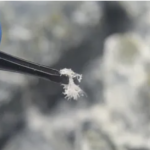Edge protection angle Protection for goods to be transported Edge protection is the collective term for all measures taken to prevent damage to an edge or prevent damage to an edge from another object or person.
The edge protection angles like the rubber speed humps can be differentiated depending on the manufacturing material, appearance or shape, and size. The brackets can be made of aluminum, metal, polyethylene, PVC, or other plastics. The aluminum edge protection brackets are suitable for upright or lying paper roll transports, above all due to their exceptionally durable design and the anti-slip coating on the support side and are recommended by paper mills.
They are suitable for belt width of 50 mm. For securing a load of all sensitive and fragile goods in transit, the ideal edge protection, the edge protection bracket made of PVC and polyethylene. They protect the camouflaged sports goods safely when using lashing or bundle straps, and the wide contact surface distributes the tension in a favorable ratio. The belt width used can be 50 mm.
The edge protection brackets made of metal are used where a large area of pressure distribution and robust brackets are required, such as when transporting clamping plates. At the same time, edge protection angles made of plastic are used for standing, lying, or edge pressure-sensitive loads; they are characterized by a large area of pressure distribution and their light design. But they are also particularly jam-friendly. Their resistance to cold characterizes other edge protection angles made of plastic. Depending on the area of application and use, the shape and material from which the edge protectors are made are designed.
The Main Advantages Of Edge Protectors
To protect a shipment, it must be secured with the right strapping. However, these often cut deep into the parcel and could damage the goods to be shipped. This problem can easily be solved by using corner protectors.
Edge protection angles for secure edge protection usually consist of several layers of solid cardboard that are glued together to make them waterproof. Thus, they belong to the packaging materials made of paper. However, they are often made of plastic and sometimes even of wood or metal. They are used in almost all branches of the logistics sector for securing loads, as their possible uses are diverse.
They are used, for example, to protect sharp edges of high-quality goods, stiffen and secure pallet loads, increase the stackability of cardboard boxes, or as a stiffening element in display construction. They are best known for being particularly firm and stiff. They only have a low price and are also very environmentally friendly.






